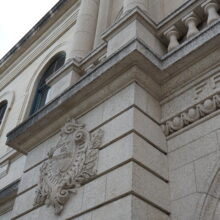Winnipeg – Carnegie Library
The words “Free to All”, inscribed above the front door of Winnipeg’s Carnegie Library, aptly describe the philosophy behind the building’s construction.
Andrew Carnegie (1835-1919) was an American philanthropist who believed in the social power of literacy. With financial support from the Carnegie Foundation, over 2,500 public libraries were built between 1883 and 1929.
In 1901 J.P. Robertson, a Winnipeg librarian, applied for a grant from the Carnegie Foundation to build Winnipeg’s first library. Until this point, Winnipeg’s library system had been crammed into Winnipeg’s City Hall. Four years later, in 1905, the Carnegie Foundation approved a grant of $75,000 – provided the city supplied the land and covered the annual operating costs. And, of course, library’s services remained free to the public.
Architect Samuel Hooper’s neo-classical design won out against eight competitors. A $12,000 patch of land on William Avenue was selected and construction began. Detailed stonework frames the entrance, which is topped by paired ionic columns rising up the second and third floors. Popular grey limestone was used for the bulk of the facade.
In 1977, the City of Winnipeg took over the building for the City Archives. They remained tenants until 2013, when the building sustained water damage.













